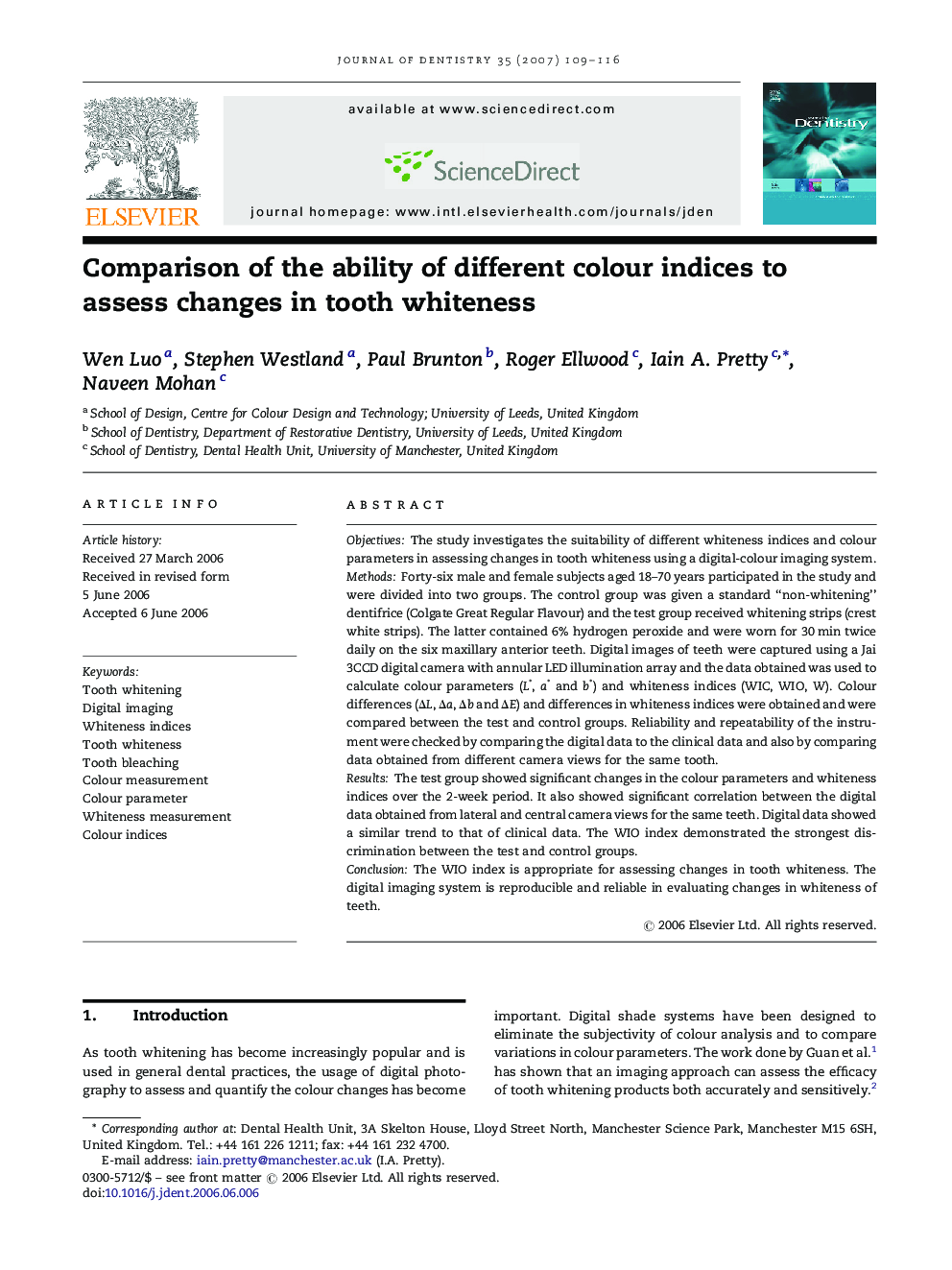| Article ID | Journal | Published Year | Pages | File Type |
|---|---|---|---|---|
| 3146189 | Journal of Dentistry | 2007 | 8 Pages |
ObjectivesThe study investigates the suitability of different whiteness indices and colour parameters in assessing changes in tooth whiteness using a digital-colour imaging system.MethodsForty-six male and female subjects aged 18–70 years participated in the study and were divided into two groups. The control group was given a standard “non-whitening” dentifrice (Colgate Great Regular Flavour) and the test group received whitening strips (crest white strips). The latter contained 6% hydrogen peroxide and were worn for 30 min twice daily on the six maxillary anterior teeth. Digital images of teeth were captured using a Jai 3CCD digital camera with annular LED illumination array and the data obtained was used to calculate colour parameters (L*, a* and b*) and whiteness indices (WIC, WIO, W). Colour differences (ΔL, Δa, Δb and ΔE) and differences in whiteness indices were obtained and were compared between the test and control groups. Reliability and repeatability of the instrument were checked by comparing the digital data to the clinical data and also by comparing data obtained from different camera views for the same tooth.ResultsThe test group showed significant changes in the colour parameters and whiteness indices over the 2-week period. It also showed significant correlation between the digital data obtained from lateral and central camera views for the same teeth. Digital data showed a similar trend to that of clinical data. The WIO index demonstrated the strongest discrimination between the test and control groups.ConclusionThe WIO index is appropriate for assessing changes in tooth whiteness. The digital imaging system is reproducible and reliable in evaluating changes in whiteness of teeth.
